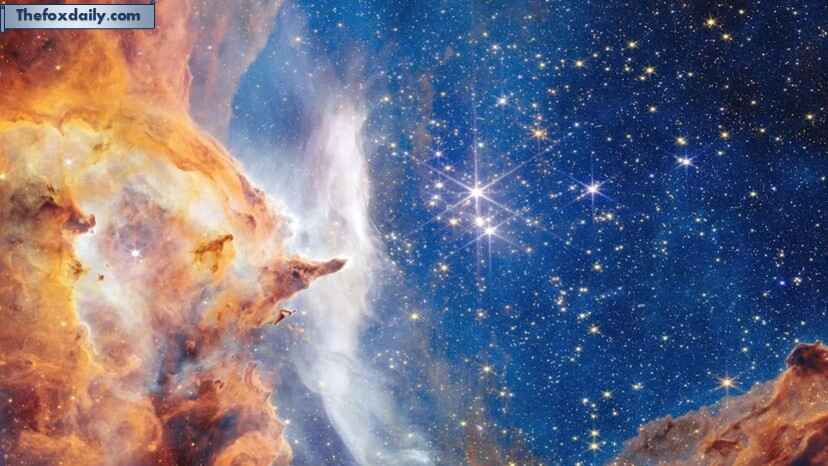
NASA’s James Webb Space Telescope has captured an infrared image of the Lobster Nebula (NGC 6357), which is 5,500 light-years away from Earth. It contains newborn stars that emerge from bright orange and blue gas clouds to form angular, mountain-like spires. Three huge core stars burn brilliantly at the center of Pismis 24, a young star cluster. They make a hole in the nebula using strong UV light. Astronomers say Pismis 24 is one of the closest sites for big star birth.
The Lobster Nebula’s Stellar Nursery
NASA says Pismis 24 is located in the Lobster Nebula, a huge molecular hydrogen cloud, NGC 6357. This stellar nursery is illuminated by hot, young stars whose ultraviolet radiation has ionized and hollowed out parts of the gas.
The inner rim of this cavity is visible in Webb’s infrared view as a wall of gas punctuated by tall spires. The highest spire is roughly 5.4 light-years high. Starlight illuminates veils of gas and dust that float around the spires.
A System of Triple-Giant Stars
The star known as Pismis 24-1 is the brightest object in Pismis 24. Although it is actually many stars, it was formerly believed to be a single enormous star. At least two stars with masses of 74 and 66 times that of the Sun make up Pismis 24-1; these stars were previously thought to be one. A triple is revealed by Hubble data: two ~36-solar-mass stars in close proximity to one ~66-solar-mass star.
Each of the three is bright and will likely burst as a supernova in around a million years. Star formation is being triggered by the radiation from the stars sculpting the core of one gas pillar that points at Pismis 24-1.
In about a million years, each of the three luminous objects is predicted to explode as a supernova. Pismis 24-1 is the location of one gas pillar, whose core is being shaped by the radiation from the stars, causing star formation.
In about a million years, each of the three luminous objects is predicted to explode as a supernova. Pismis 24-1 is the location of one gas pillar, whose core is being shaped by the radiation from the stars, causing star formation.
For breaking news and live news updates, like us on Facebook or follow us on Twitter and Instagram. Read more on Latest Technology on thefoxdaily.com.



COMMENTS 0